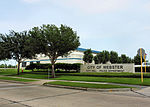Texas Killing Fields

The Texas Killing Fields is a title used to roughly denote the area surrounding the Interstate Highway 45 corridor southeast of Houston, where since the early 1970s, more than 30 bodies have been found, and specifically to a 25-acre patch of land in League City, Texas where four women were found between 1983 and 1991. The bodies along the corridor were mainly of girls or young women. Furthermore, many additional young girls have disappeared from this area who are still missing. Most of the victims were aged between 12 and 25 years. Some shared similar physical features, such as similar hairstyles.Despite efforts by the League City, Texas police, along with the assistance of the FBI, very few of these murders have been solved. The area has been described as "a perfect place [for] killing somebody and getting away with it". After visiting some of the sites of recovered bodies in League City, Ami Canaan Mann, director of the film Texas Killing Fields, commented: "You could actually see the refineries that are in the south end of League City. You could see I-45. But if you yelled, no one would necessarily hear you. And if you ran, there wouldn't necessarily be anywhere to go." A task force composed of local law enforcement officials and FBI agents, called Operation HALT (Homicide/Abduction Liaison Team), has been formed to investigate the incidents.
Excerpt from the Wikipedia article Texas Killing Fields (License: CC BY-SA 3.0, Authors, Images).Texas Killing Fields
Washington Street,
Geographical coordinates (GPS) Address Nearby Places Show on map
Geographical coordinates (GPS)
| Latitude | Longitude |
|---|---|
| N 29.499722222222 ° | E -95.086944444444 ° |
Address
Washington Street 229
77573
Texas, United States
Open on Google Maps







